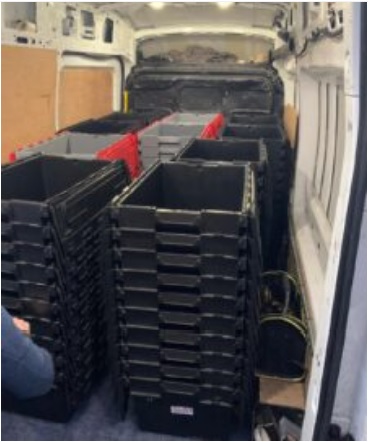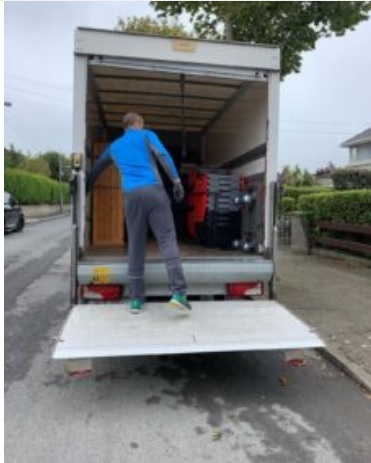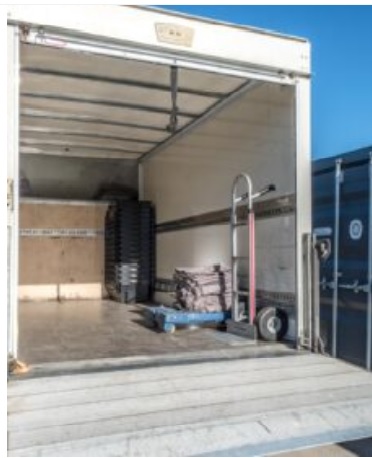Moving Tips
Do a clearout
The best first step is to do a clear out of possessions so that things you no longer need don’t move to your new home. Put stuff up on adverts.ie, or donate to a charity shop. Some charities can call to your house to collect furniture, clothes, etc.
Start planning early
Start a checklist on what needs to be done. Find out the process of moving utilities such as electricity, gas, phone, TV, internet, bin collection. This would be a good time to change providers if you’re considering this. Set yourself a reminder to take photos of meters on the day of moving.
Have school and medical records transferred. Order school uniforms early.



Collect boxes
See what boxes you have that are strong and could be used, or ask around for spare boxes. Boxes vary a lot in quality, and depending what they’re made to hold, so for things like books, you’ll need a box that’s strong (double-walled cardboard), or preferably hire plastic crates.
Use up stored foods
A few weeks before moving, start using the foods you have stored, to reduce what you have to pack. Organise what’s in your freezer to be consumed before moving.
Redirect post
You could contact places you receive mail from separately but easily forget some, as some post only comes once or twice a year. An post has a handy redirect service that will take care of all post for the first year.
Be organised with boxes
Label each box for the room it’s to go in. If it’s a large move, give each room a colour and use coloured labels or coloured tape around the box.
If a box contains something fragile, mark it in as “fragile”. You could use fragile tape to make this very clear
You can write other details as well, like what it contains, or instructions like “this side up”.
If you have hired crates, do not use permanent ink or glue that can’t be removed later.
Visualise the move
What information do the movers need to help the move to go well? If it’s a large house or complicated layout, or rooms are bare, providing a sketch of floor plans could really help. If using colour-coding for packing, put these colours in the sketch and put a sticker on each door. A bit of forward planning and communication can save much time and energy on the day (saving money as well if you’re paying by the hour).
Pack according to weight and volume
As a rule, the heavier the item, the smaller the box. Whether it’s cardboard boxes or crates you’re using, do not over-fill to a point where the box cannot close easily, because this makes stacking difficult. Do not under-fill either. Fill empty space with things like bed linen, pillows, towels, paper.
Some furniture should be dismantled (and some should not).
Most large pieces of furniture such as beds and dining tables can be disassembled to make moving easier (you can ask the removalist to do this). Other types though such as those you purchased as a flatpack, such as from IKEA, may not be designed to be assembled more than once. This applies especially to the large items such as tall cupboards or sideboards which should be transported in one piece.
Everything should be dry
Empty and defrost the fridge/freezer days before moving. Make sure it’s completely dry. Same for other appliances that use water – washing machines, dishwashers etc. Make sure they’re not being used the day before and are dry and ready for moving day.
Hazardous liquids not allowed
Transporting anything that’s hazardous even in a container, such as flammables, pesticides, bleach or other chemicals is not allowed. Anything that runs on petrol — a lawnmower for example — should be emptied of fuel before going in the van.
Packing valuables
Some valuables such as jewellery you should take with you, but others such as antique furniture will have to go in the van. Remember that movers have a lot of experience in how to pack things correctly, so if you’re not sure how best to pack or wrap delicate or valuable items, allow the professionals to pack these for you.
Parking and entrances
Make sure that there’s parking for the hours of the move, reserving it overnight if necessary.
Clear any obstructions from doors and hallways; have paths clear so removalists can move freely.
Essentials boxes
After the move, unpacking is going to take a while, so set aside some boxes for essentials that are to be kept separate from the ‘main packing’. Pack the kettle, toaster, some cutlery, cups, plates, snacks, kitchen roll, soap, towels, toiletries, phone chargers, spare clothes. You could also have cleaning products, a small toolkit with scissors, screwdriver etc, and a first aid kit. Make the list of what you’ll need beforehand; easy to forget things that are obvious at the last minute.
Disposal of packing materials
The removal company will gladly take cardboard boxes when you’re finished with them. Ask them about this at the end of the move.
Ask for help
For example, if you have kids or pets, ask friends or relatives to mind them on the days of moving.
Look after health
In the week or so before moving, expect things to get stressful! Plan to eat properly and sleep enough so you don’t come down with a cold — this happens a lot with people moving.

